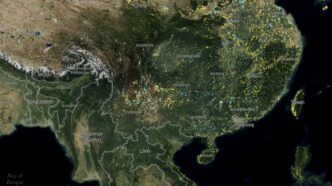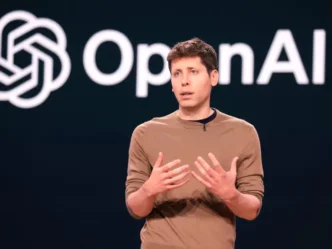Global demand for energy is climbing at an unprecedented rate. This is according to the latest Global Energy Review from the International Energy Agency (IEA). In 2024 alone, energy consumption surged across every fuel type. However, renewable energy sources stood out, driving 38% of the overall growth in global energy supply. As renewables carve out a larger share of the energy mix, understanding where these resources are deployed. And how much power they generate — becomes increasingly vital. To bridge this data gap, a groundbreaking platform known as Global Renewables Watch (GRW) was created. Backed by major players in technology, sustainability, and energy, GRW offers unprecedented insight into the state of renewable infrastructure worldwide.
Described by its creators as a “living atlas”. The Global Renewables Watch platform maps and measures utility-scale solar and wind energy projects worldwide. Born from a collaboration between Microsoft, Planet Labs, and The Nature Conservancy, GRW harnesses the power of AI and high-resolution satellite imagery to monitor renewable energy growth in real time.
Since launching in 2022, GRW has grown into a powerful tool for visualizing the global expansion of clean energy. The platform’s leadership includes Juan Lavista Ferres, Microsoft’s Corporate Vice President and Chief Data Scientist, Will Marshall, Co-Founder and CEO of Planet Labs, and Jennifer Morris, CEO of The Nature Conservancy — each bringing unique expertise to the mission.
Microsoft contributes AI and cloud computing strength, while Planet Labs offers detailed satellite imagery. The Nature Conservancy ensures that the ecological and sustainable development aspects are fully integrated. Together, they aim to create a shared platform that promotes transparency in renewable energy deployment.
“You can’t manage what you can’t measure,” Will Marshall explains. “By merging Microsoft’s AI, Planet’s imagery, and The Nature Conservancy’s deep knowledge, we’re democratizing access to critical renewable energy data.”
Juan Lavista Ferres emphasizes that global access to this data is vital. “The Global Renewables Watch is not just a monitoring tool. It’s a critical step towards tracking progress on the Paris Climate Agreement and advancing the United Nations’ Sustainable Development Goal 7 — affordable and clean energy for all.”
GRW initially started by mapping renewable energy installations in Germany and India. Since then, it has scaled to offer a truly global perspective, providing detailed views of solar and wind infrastructure from 2018 onward — down to national and subnational levels.
Today, the platform is fully open to the public. Researchers, policymakers, governments, companies, and clean energy advocates can now explore a rich dataset capturing the renewable energy transition in near real-time.
The findings so far reveal just how quickly the renewable sector is expanding:
- Global solar land coverage has tripled in the past seven years.
- Onshore wind turbines have more than doubled, with 375,000 active turbines as of mid-2024.
- The United States and China dominate in total wind turbine installations, while Europe leads in turbines per capita.
- More than half of Europe’s wind turbines are concentrated in five countries — Germany, Spain, France, the UK, and Italy.
Juan reflects on this momentum, calling GRW a “significant milestone” in clean energy development. “Scaling renewables demands a strategic approach that balances energy generation with environmental protection and community priorities. None of this would be possible without the scale and speed of AI.”
Beyond just mapping installations, GRW is designed to influence policy and practice. It provides vital data to help decision-makers pinpoint ideal locations for future projects — balancing development needs with ecosystem preservation.
Jennifer Morris of The Nature Conservancy adds, “GRW is a publicly accessible resource designed to help researchers and policymakers understand current capacities and gaps. Our goal is to empower decision-makers with data-driven insights to scale renewable energy responsibly, while protecting nature.”
With over two years of detailed mapping now in the public domain, GRW offers a unique combination of historical context and current data. Its robust models allow users to analyze renewable energy growth, spot underdeveloped regions, and design more effective expansion strategies.
As the world races to meet climate goals and transition away from fossil fuels, the Global Renewables Watch is proving to be a timely and impactful resource. By delivering clear, actionable insights, the platform supports global efforts to build a cleaner, greener energy future.
Juan concludes, “By measuring and mapping renewable infrastructure worldwide, GRW offers invaluable clarity on how far we’ve come — and where we still need to go. Thanks to our partners, this platform stands as a digital public good, supporting both the public and private sectors as they power economies and protect vital resources.”











